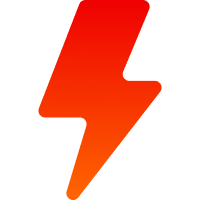Maximize Conversions with Automation Workflows
Table of Contents
- Introduction
- The Importance of Automation Workflows
- Setting Up the Welcome Automation Workflow
- 3.1 Choosing the Length of the Workflow
- 3.2 Creating the First Email
- 3.3 Creating the Second Email
- 3.4 Creating the Final Email
- Setting Up the Abandoned Cart Automation Workflow
- 4.1 Choosing the Length of the Workflow
- 4.2 Creating the First Email
- 4.3 Creating the Second Email
- 4.4 Optional: Creating a Third Email
- Monitoring Performance and Making Improvements
- Conclusion
Introduction
In this article, we will explore the setup of two highly effective automation workflows: the welcome automation and the abandoned cart automation. These workflows are known to bring in more than 50% of all automated email conversions, making them crucial for any business. We will guide you through the step-by-step process of setting up these workflows and provide you with tips and best practices to maximize their impact. So let's dive in and harness the power of automation to drive conversions and boost your email marketing strategy.
The Importance of Automation Workflows
Automation workflows have become an integral part of email marketing strategies, enabling businesses to deliver targeted and personalized messages to their subscribers at the right time. By automating certain processes, businesses can save time, increase efficiency, and nurture customer relationships effectively. In this section, we will discuss why automation workflows are important and how they can benefit your business.
Setting Up the Welcome Automation Workflow
The welcome automation workflow is the first point of contact with your new subscribers and plays a crucial role in making a positive first impression. In this section, we will walk you through the process of setting up a welcome automation workflow, from choosing the length of the workflow to creating compelling emails that engage your audience.
Choosing the Length of the Workflow
When setting up a welcome automation workflow, you have the flexibility to decide how many emails you want to include. In this subsection, we will discuss the pros and cons of different lengths and provide recommendations based on your resources and objectives.
Creating the First Email
The first email in the welcome automation workflow sets the tone for your relationship with the subscriber. It should be simple, concise, and convey gratitude for their trust in your brand. In this subsection, we will guide you on what to include in the first email and offer tips to make it engaging and effective.
Creating the Second Email
The second email in the welcome automation workflow provides an opportunity to share more information about your brand and build a stronger connection with your subscribers. In this subsection, we will explore different content ideas for the second email and suggest ways to make it informative and compelling.
Creating the Final Email
The final email in the welcome automation workflow is your last chance to leave a lasting impression on your subscribers. In this subsection, we will discuss various approaches for the final email and provide suggestions on how to leverage social proof, community engagement, and promotional content to maximize its impact.
Setting Up the Abandoned Cart Automation Workflow
The abandoned cart automation workflow is designed to recover potential lost sales by targeting customers who added items to their cart but did not complete the purchase. In this section, we will guide you through the process of setting up an abandoned cart automation workflow and share effective strategies to entice customers to complete their purchase.
Choosing the Length of the Workflow
Similar to the welcome automation workflow, the abandoned cart automation workflow can be tailored to fit your business needs. In this subsection, we will discuss the advantages and disadvantages of different workflow lengths and provide recommendations based on industry best practices.
Creating the First Email
The first email in the abandoned cart automation workflow serves as a reminder to customers about the products they left behind. In this subsection, we will explain how to create a captivating first email that encourages customers to complete their purchase and provide tips to keep it concise and impactful.
Creating the Second Email
The second email in the abandoned cart automation workflow presents an opportunity to incentivize customers to complete their purchase. In this subsection, we will explore strategies to create urgency, offer discounts, and leverage the power of scarcity to motivate customers and increase conversion rates.
Optional: Creating a Third Email
For businesses looking to further optimize their abandoned cart automation workflow, this subsection provides guidance on creating a third email. We will discuss how to reiterate important points from previous emails while adding a sense of urgency and scarcity to drive conversion.
Monitoring Performance and Making Improvements
Once you have set up the welcome and abandoned cart automation workflows, it is crucial to monitor their performance and make necessary improvements. In this section, we will discuss key metrics to track, such as open rates and click rates, and provide tips on how to analyze the data and optimize your workflows for better results.
Conclusion
Automation workflows are a powerful tool in your email marketing arsenal. In this article, we have covered the setup process for two essential workflows: the welcome automation and the abandoned cart automation. By implementing these workflows and following the best practices outlined, you can effectively engage your subscribers, drive conversions, and enhance your overall email marketing strategy. Remember to continuously monitor and refine your workflows based on performance data to achieve even greater success. Embrace the power of automation and take your email marketing to new heights.






















